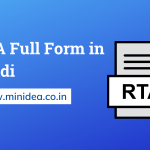Image SEO refers to the practice of optimizing images on a website to improve the search engine ranking of the page or website. This can be achieved by using relevant, descriptive file names and alt text for images, as well as compressing images to reduce their file size and improve loading times.
Optimizing images for search engines can help to increase the visibility of a website in search results, particularly when the images themselves are being searched for. It can also improve the user experience, as properly optimized images can help pages to load faster and be more easily understood by search engines.
What is Image SEO?
Image SEO is the process of optimizing the images on your website or blog so they are easy for search engines to “read” and find, consequently improving the visibility and rankings of your content in Google and other search engines. Image SEO can also improve accessibility on your site.
Here are the key points for Image SEO best practices:
- Choose the right image format.
- Image compression
- Unique image creation and optimizing the images
- Authority of page images
- Image popularity
- Images should be mobile-friendly.
- Open Graph and Twitter Cards should be implemented.
- Structured data to be implemented.
Image SEO Optimization Best Practices
Some specific techniques for optimizing images for SEO include:
1. Choose the right file format
Different image file formats have different properties, and some are more suitable for certain types of images than others. For example, JPEG is a good choice for photographs, while PNG is better for graphics with transparent backgrounds.
- PNG: It produces better quality images but comes in a larger size.
- JPEG: It tends to be the best option; it can be adjusted to find a good balance.
- WebP: Choose lossless or lossy compression using this. This is the only image format supported by both Chrome and Firefox.
- SVG: It’s light and responsive.
- GIF: It should be used only when you animate an image.
2. Resize images
Site speed is the most important aspect of image SEO. Larger images take longer to load, so it’s a good idea to resize them to the dimensions you need before uploading them to your website.
3. Compress your images
There are various tools that can help you compress images without sacrificing too much quality. Some options include tools like TinyPNG, Kraken.io, and ImageOptim.
For an image URL to be included in the index more quickly and easily by Googlebot, moderate web-optimized file sizes should be used. There are many tools used to check site speed like PageSpeed Insights, Lighthouse, and GTmetrix.
4. Use lazy loading
Lazy loading involves loading images only when they are needed, rather than loading all images on a page at once. This can help improve the performance of a webpage by reducing the amount of data that needs to be loaded at once.
5. Use responsive images
Responsive images automatically adjust their size and resolution based on the device they are being viewed on. This can help reduce the load time of a webpage on mobile devices, which often have slower internet connections than desktop computers.
6. Use a CDN
A content delivery network (CDN) can help reduce the load time of a webpage by serving images from servers that are closer to the user. This can be particularly useful for websites with a large number of images or users in different locations.
7. Alt Text
Alt text (or alternative text) is a written description of an image. Optimized alt text is crucial in getting Google to rank your images on Search Engine.
Keep your alt text fewer than 125 characters. Below mentioned is the SEO-friendly image alt text. The code used for alt text is :
<img src=”cars.jpg” alt=”Cars” class=”responsive”>
Alt Text Examples
Bad alt text: alt=”cats”
Good alt text: alt=”sleeping cats with yarn”
Better alt text: alt=”ginger kittens sleeping with yarn”
Best alt text: alt=”two ginger kittens sleeping with pink and purple balls of yarn”
By implementing these and other image SEO best practices, it is possible to improve the search engine ranking and visibility of a website.
Recommended resources for SEO:
- Important SEO Ranking Factors
- Long Tail Keyword Research Tools
- Effective and Simple SEO Tips For Beginners
- Free SEO Tools for beginners
- SEO Trends an how to apply them
FAQ – Image SEO Optimization
What is image SEO?
Image SEO refers to the practice of optimizing your images for search engines through thoughtful alt text, appropriate captions, good file dimensions, and more.
Why is image SEO important?
Image SEO is important in order to improve user experiences, visibility, and rankings of your content in Google.
Conclusion – Image SEO
Hopefully, you can use these best practices to level up and earn new traffic through search image results pages.
Happy optimizing!











